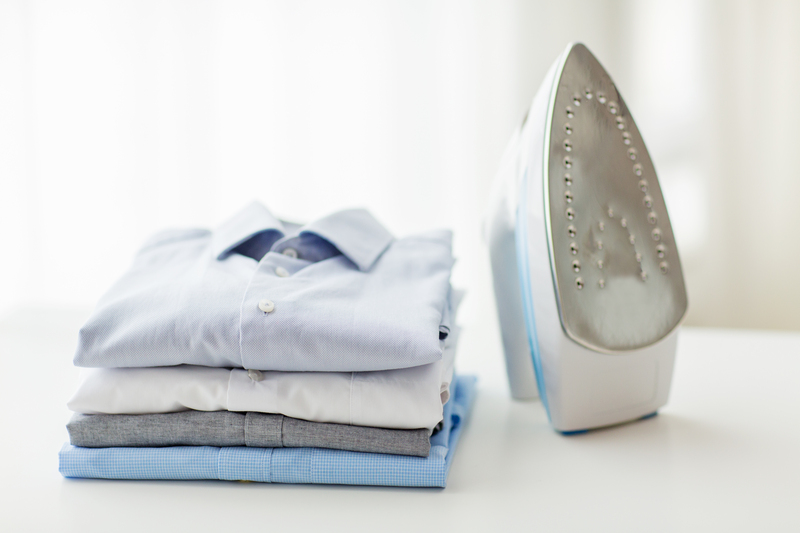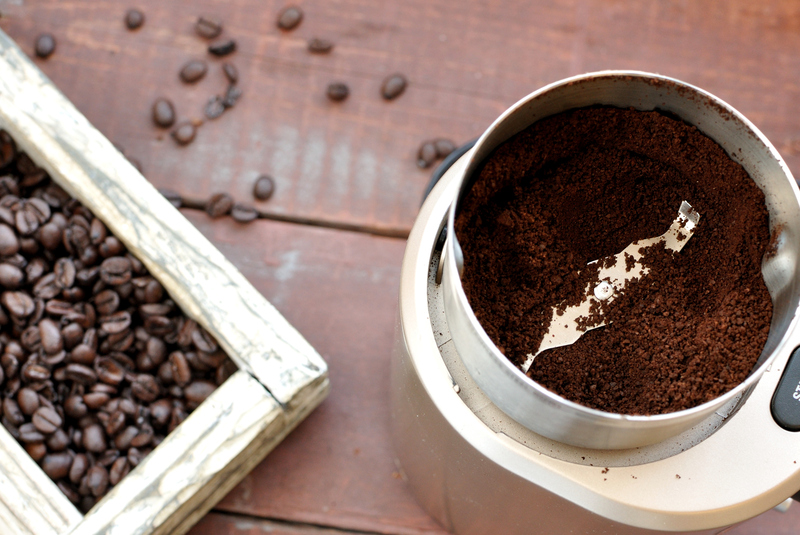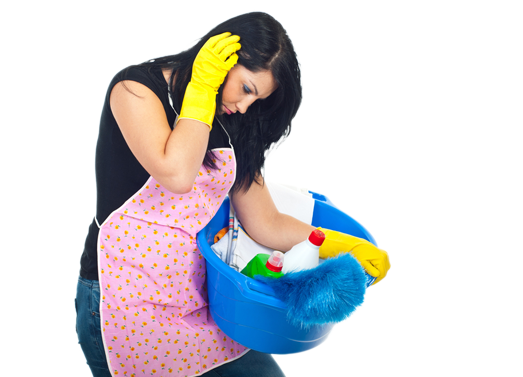Transform Dull Drapes: Secrets to Proper Curtain Cleaning
Posted on 16/08/2025
Transform Dull Drapes: Secrets to Proper Curtain Cleaning
Is your home's atmosphere being dampened by dull and dirty drapes? Curtains do more than merely provide privacy and filter sunlight--they're an essential element of decor. However, over time, dust, pollutants, and moisture can leave your window treatments looking drab and uninspired. Proper curtain cleaning is the secret to breathing new life into your interiors. In this comprehensive guide, discover the strategies, techniques, and expert secrets that will help you transform your tired curtains into statement pieces once again.
Why Curtain Cleaning Matters
Curtains and drapes are notorious dust magnets. Left unattended, they can harbor allergens, pet hair, and even mildew, compromising both visual appeal and indoor air quality. By attending to routine curtain maintenance, you can:
- Enhance the overall look of your home
- Improve indoor air quality by removing allergens and dust
- Preserve fabric longevity and drape performance
- Prevent permanent stains and odors
Caring for curtains is as crucial as cleaning floors and upholstery. Want spotless, fresh, and vibrant drapes? Start by choosing the right curtain cleaning technique.

Pre-Cleaning: Identifying Your Curtain Fabric
Different curtain materials require unique care approaches. Begin by checking the care label for instructions and fabric type. Common curtain fabrics include:
- Cotton and linen: Natural fibers, usually machine or hand washable, but can shrink if treated improperly.
- Polyester blends: Durable, generally easy to clean with minimal shrinkage risk.
- Velvet and silk: Delicate and often require dry cleaning or gentle hand washing.
- Sheer and lace: Lightweight fabrics prone to snagging, best handled with care.
- Thermal and blackout curtains: Backed with coatings, often need vacuuming or spot cleaning.
If you've misplaced the care label, test a small, inconspicuous area before proceeding with full cleaning. When in doubt, consulting a professional curtain cleaning service is wise for valuable or vintage drapes.
Secrets to Successful Curtain Cleaning
1. Regular Maintenance: The Key to Lasting Beauty
Before deep cleaning, incorporate simple habits that prevent lasting buildup and extend the life of your curtains:
- Vacuum curtains weekly using the upholstery attachment--pay extra attention to pleats and hems.
- Shake out curtains outdoors every few weeks to dislodge accumulated dust and small particles.
- For sheer and lightweight curtains, gently brush with a soft cloth or lint roller.
2. Easy At-Home Cleaning Methods
Depending on fabric and instructions, you can use several effective home methods for curtain cleaning:
Machine Washing Curtains
- Remove all hardware: Take down hooks, rings, and any hanging hardware before washing.
- Shake out loose dust outdoors.
- Use cold water and a gentle cycle to prevent shrinkage and color fading.
- Opt for mild detergents: Avoid bleaches and harsh chemicals that can weaken fibers.
- Place delicate curtains inside a mesh laundry bag for added protection.
- Hang damp curtains back on the rod to air-dry--iron while slightly damp for a crisp finish.
Hand Washing Curtains
- Fill a clean tub or basin with lukewarm water and mild detergent.
- Immerse curtain panels and agitate gently by hand, focusing on heavily soiled areas.
- Rinse thoroughly with cool water until no soap remains.
- Do not wring; press excess water out with a clean towel.
- Rehang immediately or lay flat to dry, reshaping while damp to avoid wrinkling.
Steam Cleaning Curtains
- Use a handheld fabric steamer on synthetic, cotton, or lined curtains--and always do a patch test first.
- Work from top to bottom, keeping the steamer moving, and never hold in one spot too long to prevent water stains.
- Steam removes dust, kills bacteria, and smooths wrinkles without removing curtains from the rod.
Spot Cleaning Stains
- Address stains immediately for the best results.
- Use a damp cloth and a small amount of diluted mild detergent; blot, don't rub, for spot treatment.
- For stubborn stains (like chocolate or wine), treat with a fabric-specific stain remover following instruction labels.
- Avoid soaking blackout or thermal-lined curtains--these often require only gentle surface cleaning.
3. When to Call in the Professionals
Certain fabrics and situations warrant expert attention. Seek professional curtain cleaning for:
- Heavily stained, antique, or delicate luxury curtains (silk, velvet, brocade).
- Extensively lined, pleated, or intricately decorated drapes.
- Blackout curtains that could lose their thermal properties if immersed.
- Persistent odors or mold contamination.
Professionals use specialized equipment and techniques to clean curtains without risking shrinkage, color loss, or damage. Some cleaning companies offer on-site curtain cleaning, minimizing disruption to your home.
Curtain Drying and Ironing Tips for a Perfect Finish
- Air drying is best: Direct sunlight can cause fading, so dry in a shaded area or indoors.
- For heavy drapes, hang back on the rod while slightly damp--gravity assists in smoothing wrinkles.
- If ironing is needed, use the lowest heat setting suitable for your fabric (check the care label).
- Steam while hanging for a professional, crease-free appearance.
Never tumble dry thermal or blackout curtains as the heat can damage backing materials.
Freshening Curtain Odors Naturally
Sometimes, curtains harbor odors from smoke, pets, or kitchens. Try these natural deodorizing solutions:
- Bake odors away by sprinkling a little baking soda on dry curtains, leaving for 15 minutes, then vacuuming.
- Hang drapes outside on a windy day for natural aeration (avoid direct sunlight for delicate materials).
- Mist with a 50/50 solution of water and white vinegar for instant freshness--spot test for colorfastness first.
- Use fabric sprays with essential oils for a long-lasting, clean scent.
How Often Should You Clean Curtains?
Wondering how often to clean curtains? Frequency depends on your environment:
- Every 3 to 6 months for homes with pets, allergies, or high traffic.
- Every 6 to 12 months in less dusty, low-traffic areas.
- Vacuuming or shaking out: Once per week.
- Spot clean stains as soon as they appear to prevent setting.
Regular curtain cleaning not only keeps your windows looking beautiful but also supports a healthier indoor environment for your family.
Extending the Life of Your Curtains
Preserve the vibrancy, fluffiness, and shape of your drapes with these long-term care tips:
- Rotate curtains from sun-facing windows to internal rooms every few months to prevent uneven fading.
- Dust window frames and sills regularly--dirty sills can transfer grime onto fabrics.
- Use tie-backs or holdbacks to minimize hand contact and soiling in high-traffic areas.
- Avoid placing furniture too close to curtains, preventing trapping of dust or accidental tugging.
- Consider sheer panels underneath heavy drapes to catch dust and reduce the need for frequent washing.
*Smart maintenance means less frequent deep cleaning and longer-lasting beauty.*
Frequently Asked Questions about Curtain Cleaning
Can I Machine Wash All Curtains?
Not all curtains are machine washable. Always check the label. Delicate, lined, or intricate curtains may require hand washing or professional care. Regular cotton and polyester blends are usually safe for gentle machine cycles.
How Do I Remove Mildew from Curtains?
For light mildew, brush the affected area outside to remove spores. Launder with hot water if the fabric allows, adding a cup of white vinegar to the wash. For severe mildew or musty odors, consult a curtain cleaning professional to prevent permanent damage.
What If My Curtains Are Too Large for My Washing Machine?
If you have oversized or heavy drapes, don't overload your machine. Either wash each panel separately or opt for bath-tub soaking and hand washing. Alternatively, consider professional curtain cleaning for oversized items.
Will Curtain Cleaning Cause Shrinking?
Shrinking is a risk with natural fabrics like cotton and linen, especially if washed in hot water. Prevent this by using cold water, air drying, and always following label instructions. If unsure, dry cleaning is the safest bet.
Can I Use a Hair Dryer to Speed Up Drying?
It's best to avoid direct hot air from hair dryers, which might damage fibers or cause uneven drying. Natural air drying is safest for most materials.

Transform & Refresh: The Final Touch
Transforming dull drapes is about more than cleaning--it's about restoring color, removing odors, and re-capturing the original elegance of your window treatments. Whether you're tackling a yearly deep clean or refreshing with regular maintenance, these curtain cleaning secrets will ensure your home stays beautiful and welcoming.
Keep this essential guide as your go-to resource, and let your curtains set the tone for every room--fresh, vibrant, and dust-free!
Summary: Curtain Cleaning Unlocks Stunning Interiors
- **Identify fabric and care requirements first.**
- **Incorporate vacuuming and spot treatment into your routine.**
- **Wash or steam clean as appropriate, protecting delicate and treated fabrics.**
- **Dry carefully and iron while still slightly damp for crisp, perfect pleats.**
- **Consult professional cleaning for irreplaceable, valuable, or tricky curtains.**
Don't let dull drapes drag down your decor! With these expert curtain cleaning tips, your window treatments will look brighter and feel fresher than ever before.





